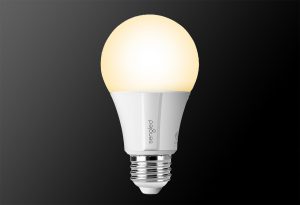Have some spare time at home and wondering how to bring down your utility bills? Conduct your own home energy audit, and use this guide as a handy checklist.
Switch to LEDs
If you haven’t heard this before from CUB, we’ll say it again: Ditch your incandescents! Incandescent light bulbs expel 90 percent of the energy they use as heat, according to the Department of Energy. LEDs are the most energy-efficient bulb on the market right now–they are 85 percent more efficient than traditional light bulbs.
Consider replacing the bulbs in your house with LEDs. If you’re looking to go a step further, look into lighting control options, such as sensors, dimmers or timers, that could help you reduce your costs even more.
Give Your Heating and Cooling Equipment a Once-Over
You should inspect heating and cooling equipment annually. (If you can, you should have a heating and cooling professional inspect and clean your equipment once a year.) Check your ductwork for dirt streaks, as these indicate air leaks. Leaks in ductwork should be plugged with a special duct sealant, known as mastic. Insulate any ducts or pipes that travel through unheated spaces (An insulation R-Value of 6 is the recommended minimum. More on R-Values below.).
If the unit is more than 15 years old, you should consider replacing your system. Newer units are much more energy-efficient, therefore reducing your energy consumption and saving you money!
Locate and Seal Air Leaks
You could save 10 to 20 percent on energy costs by reducing drafts in your home, according to the Department of Energy. Check for leaks where your walls and ceiling meet. Also look for gaps in the baseboard. Check windows, doors, lighting and plumbing fixtures, switches, and electrical outlets on the inside.You may also want to assess the outside of your house, inspecting all areas where two different building materials meet. For example, check where windows and siding meet. Also check for open fireplace dampers. If you’d like more instruction on detecting air leaks, see the Energy Department’s handy how-to page.
Once you identify any leaks, you should address them! Seal them with the appropriate material, most likely caulk or weatherstripping. Questions about choosing the proper material? Visit this Energy Department page for more information.
Check Your Ceiling’s Insulation
The U.S. Department of Energy warns, you could suffer a lot of heat loss through your home’s ceiling and walls if the insulation levels are less than the recommended minimum. “When your house was built, the builder likely installed the amount of insulation recommended at that time,” the department says. “Given today’s energy prices (and future prices that will probably be higher), the level of insulation might be inadequate, especially if you have an older home.”
Insulation levels are specified by R-value, or, the measure of insulation’s ability to resist heat flow. The higher the R-value, the better the thermal performance of the insulation. The recommended level for most attics is to insulate to R-38.
How do you know if your attic’s R-value is appropriate? Follow these instructions:
1. Take a trip to your attic (You should wear a mask, gloves and a long-sleeved shirt when working with insulation. Also, bring a tape measure).
2. Record the type of insulation you have. According to the Oak Ridge National Laboratory:
- Loose, light-weight yellow, pink or white is likely fiberglass;
- Dark gray to nearly white material, often with black specks, is probably rock wool;
- Small, gray fibers or flat pieces indicate cellulose;
- Blankets of light-weight yellow, pink or white material (often with a paper backing facing the home’s interior) is fiberglass batting.
3. Measure it’s depth by sticking the tape measure into the insulated space between two joists, pushing the tape all the way down until it touches the drywall. Record the measurement where the tape measure meets the top of the insulation
4. Calculate your home’s “R-value.” Multiply the measurement you took by the corresponding insulation value (listed below).
- Loose fiberglass: 2.5
- Rock wool: 2.8
- Cellulose: 3.7
- Fiberglass batting: 3.2
(For example, if you have 12 inches of fiberglass batting insulation, you would multiply 12 inches x 3.2 to get an R-value of 38.4.)
5. If your R-value is much lower than the recommended 38, consider installing more insulation. An appropriate amount of insulation will help keep heat out in the summer months and keep heat in during the winter, saving you money in the long-haul.
Assess and Unplug
Your energy use and cost is impacted by the appliances and electronics you use and how you use them. Unplug items, or use a smart power strip, to avoid phantom load. Use energy-saver settings when possible, and use the item less often if you can, especially if it’s a power drain like a gaming console.
Going even further, you may consider purchasing a newer, more efficient device.
Congrats! You’ve completed your own home energy audit.
Of course, while a “do-it-yourself” home energy audit is certainly helpful and can save you money, it is not as thorough as a professional assessment. Although most utilities have suspended in-home energy assessments due to Coronavirus, you can still register for an assessment and schedule the appointment for a later date. Sign up for ComEd’s free Home Energy Assessment here, and if you’re an Ameren customer, click here for information on the free Instant Savers Assessment.


